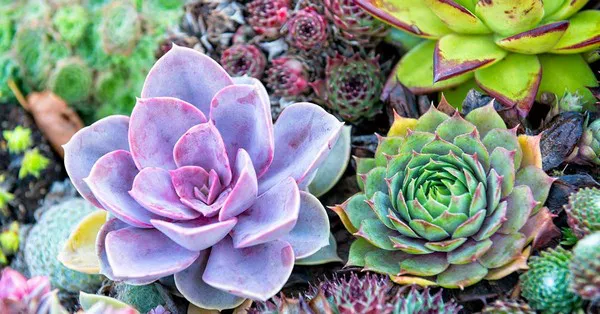Succulents, with their diverse shapes and vibrant colors, have gained immense popularity among plant enthusiasts. Whether you’re a seasoned gardener or a beginner with a green thumb, propagating succulents from leaves is a rewarding and fascinating endeavor.
Understanding Succulents
Succulents are a broad category of plants known for their water-retaining abilities, making them well-suited for arid conditions. These hardy plants store water in their leaves, stems, and roots, allowing them to thrive in environments with minimal rainfall. The term “succulent” itself is derived from the Latin word “sucus,” meaning juice or sap. With their unique adaptations, succulents have become popular choices for indoor and outdoor gardens alike.
Choosing the Right Succulent Leaves
Before delving into the propagation process, it’s crucial to select healthy leaves from a mature succulent. Look for leaves that are plump, firm, and free from signs of disease or damage. The keyword “succulents” emphasizes the importance of starting with the right plant material, as the success of propagation depends on the quality of the leaves.
Preparing the Leaves for Propagation
Once you have selected your succulent leaves, the next step is to prepare them for propagation. Gently twist or cut the leaves from the stem, ensuring that you have a clean break without tearing the tissue. It’s essential to use a sharp, clean tool to minimize the risk of infection. The keyword “succulents” emphasizes the delicate nature of the process and the need for precision in handling the leaves.
Allowing Callus Formation
After obtaining the leaves, resist the urge to immediately plant them. Instead, place the leaves in a dry, shaded area for a few days to allow callus formation. This crucial step helps prevent potential rotting when the leaves are introduced to soil or a growing medium. The keyword “succulents” underscores the importance of patience in the propagation process, setting the stage for healthy root development.
Choosing the Right Growing Medium
Selecting an appropriate growing medium is paramount to the success of succulent propagation. A well-draining mix, specifically designed for succulents, provides the ideal environment for root development. Mixtures containing perlite, sand, and potting soil in the right proportions promote aeration and prevent waterlogged conditions, safeguarding the keyword “succulents” from potential issues like root rot.
Planting Succulent Leaves
With a callus formed, it’s time to plant the succulent leaves. Insert the callused end of the leaf into the growing medium, burying it slightly to promote stability. Ensure that the planted leaves are spaced adequately to allow for optimal air circulation. The keyword “succulents” reiterates the significance of careful planting to encourage successful rooting and overall plant health.
Providing Optimal Light Conditions
Succulents are renowned for their love of sunlight. To facilitate successful propagation, place the planted leaves in a location that receives bright, indirect sunlight. Direct sunlight may scorch the leaves, while insufficient light can impede growth. Balancing the keyword “succulents” in an environment with adequate light ensures proper photosynthesis and overall plant vigor.
Maintaining the Right Moisture Levels
While succulents are adapted to arid conditions, it’s essential to strike a balance in moisture levels during the propagation process. Water the planted leaves sparingly, keeping the growing medium slightly moist but not waterlogged. The keyword “succulents” stresses the importance of avoiding overwatering, which can lead to root rot and compromise the success of propagation.
Monitoring Root Development
As the weeks pass, keep a close eye on your succulent leaves for signs of root development. Delicate white roots emerging from the callused end indicate a successful propagation. Patience is key during this stage, as root development may take several weeks. The keyword “succulents” emphasizes the gradual nature of the process and the need for consistent monitoring.
Transferring to Individual Pots
Once the succulent leaves have developed robust roots, it’s time to transplant them into individual pots. Select containers with drainage holes to maintain the well-draining conditions necessary for succulents. Gently lift the rooted leaves from the growing medium and place them in their new pots, burying the roots and a portion of the stem. The keyword “succulents” underscores the importance of careful handling during this transition to ensure continued success.
Caring for Young Succulents
With the succulents now in their individual pots, provide them with the same care as mature plants. Ensure they receive adequate sunlight, maintain proper moisture levels, and be mindful of temperature conditions. The keyword “succulents” reminds us that even as young plants, they share the same resilience and adaptability as their more established counterparts.
Troubleshooting Common Issues
While propagating succulents can be a rewarding experience, it’s not without challenges. The keyword “succulents” prompts us to address common issues such as overwatering, inadequate light, and disease. Understanding these potential pitfalls equips growers with the knowledge needed to troubleshoot and rectify problems, ensuring the health and vitality of their propagated succulents.
Conclusion
In conclusion, successfully sprouting succulents from leaves is a gratifying process that requires careful attention to detail and a patient approach. From selecting the right leaves to providing optimal growing conditions, each step contributes to the overall success of succulent propagation. The keyword “succulents” weaves through each paragraph, emphasizing the importance of understanding these unique plants and nurturing them through their journey from leaves to thriving succulents. By following this comprehensive guide, you can embark on a fulfilling journey of propagating succulents and enjoy the beauty of these resilient plants in your own garden.


